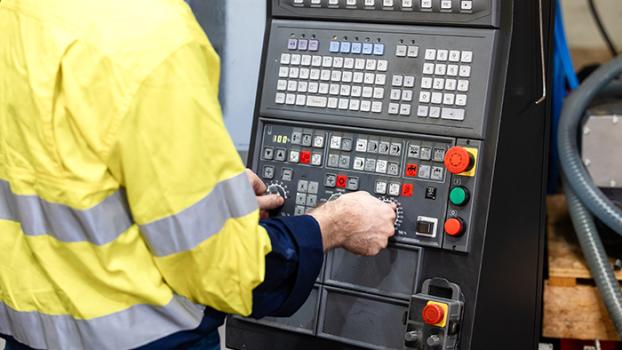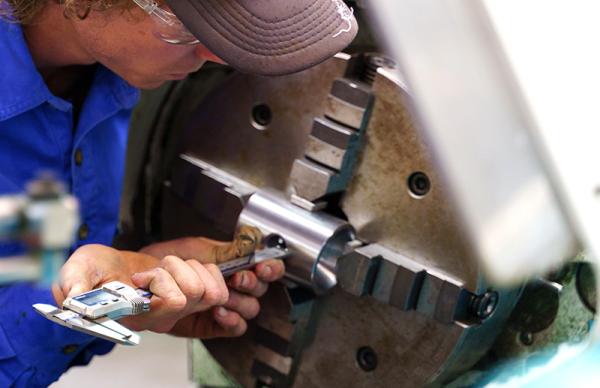
Metal machinist (first class)
Metal machinists set up and operate machine tools to shape and form metal stock and castings. They refer to detailed drawings and computer-aided design (CAD) systems to obtain the specifications for the job, calculate dimensions, measure and mark the metal and undertake the machine processes that create exact parts. They may also perform heat treatment processes on metals. Metal machinists work mostly in the metro area of Western Australia and in larger regional centres, creating parts for machines that are used in everything from mining to manufacturing and food production.
Working conditions
Metal machinists work in factories, workshops and similar environments. Conditions can be dirty and noisy. They are often on their feet for long periods and their work may be repetitive. They may be required to maintain strict safety regulations.
Tools and technologies
Metal machinists use computer numerical control (CNC) machines, drilling, turning, boring, plating and milling machines, lathes and other hand tools. They work with metals such as brass and steel. They may also operate welding or brazing equipment, as well as precise measuring equipment that ensures accuracy and precision. Metal machinists need to wear safety gear such as goggles, gloves, boots and protective clothing.
Education and training
To become a metal machinist you usually need to undertake an apprenticeship in engineering tradesperson mechanical (first class machinist) apprenticeship. The apprenticeship usually takes 42 to 48 months to complete and is available as a school-based apprenticeship.

Free support and assistance
Your local jobs and Skills Centre can provide free information, support and assistance to help you decide on the best training options to meet your goals.
Disclaimer
The information presented on the occupation profiles within this website is offered as a guide only.


